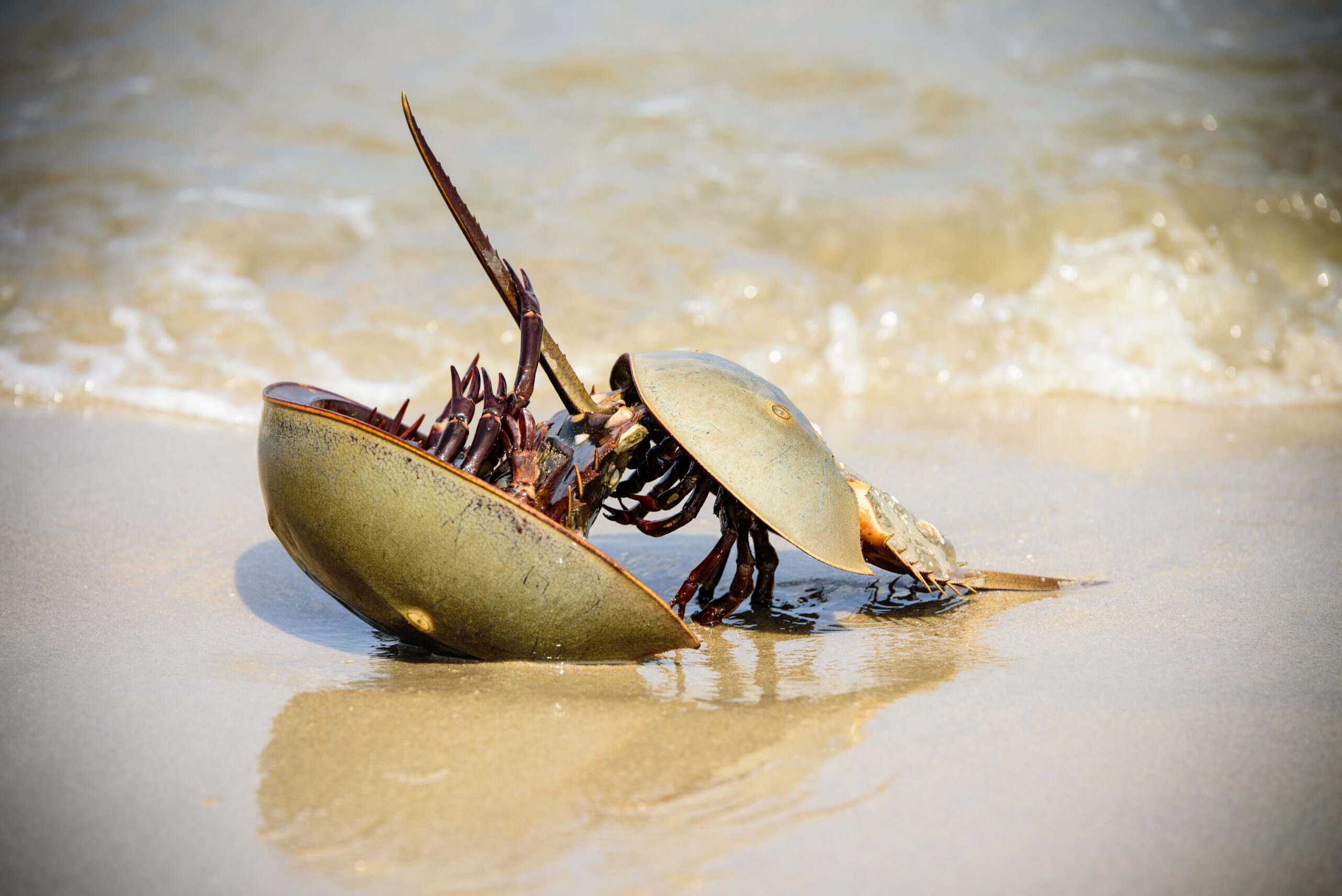
Why is horseshoe crab blood so valuable? Horseshoe crabs might look like ancient aliens, but their blood holds a secret that’s crucial for modern medicine. Horseshoe crab blood is blue due to copper-based hemocyanin, unlike our iron-based red blood. The real magic lies in its unique ability to detect bacterial toxins. This blue blood contains amebocytes, which clot around harmful bacteria, making it an essential tool for ensuring the safety of vaccines, IV drugs, and medical devices. Without this natural defense, countless medical products could pose serious risks. Horseshoe crabs play a vital role in keeping us safe, proving that sometimes, the most unassuming creatures have the most extraordinary gifts.
Key Takeaways:
- Horseshoe crab blood, with its unique blue color and lifesaving properties, plays a crucial role in ensuring the safety of medical equipment and vaccines, making it a marvel of nature and medicine.
- While horseshoe crab blood is vital for modern medicine, ethical considerations and conservation efforts are necessary to protect these ancient creatures and develop sustainable alternatives for the future.
What Makes Horseshoe Crab Blood Unique?
Horseshoe crabs have been around for millions of years, but their blood holds some of the most fascinating secrets of the natural world. Here are some incredible facts about this ancient creature's blood.
-
Blue Blood: Horseshoe crab blood is blue due to the presence of copper-based hemocyanin, unlike human blood which is red because of iron-based hemoglobin.
-
Medical Marvel: The blood contains a substance called Limulus Amebocyte Lysate (LAL) which clots in the presence of bacterial endotoxins, making it invaluable for testing medical equipment and vaccines for contamination.
-
Ancient Creatures: Horseshoe crabs have existed for over 450 million years, predating dinosaurs and surviving multiple mass extinctions.
-
Lifesaving Tests: LAL tests are crucial for ensuring the safety of intravenous drugs, surgical implants, and other medical devices.
-
Harvesting Blood: Scientists collect blood from horseshoe crabs by carefully inserting a needle into a soft tissue area, usually without killing the animal.
The Science Behind Horseshoe Crab Blood
Understanding the science behind horseshoe crab blood can help us appreciate its importance in both nature and medicine.
-
Hemocyanin Efficiency: Hemocyanin is more efficient than hemoglobin at transporting oxygen in cold, low-oxygen environments, which is why horseshoe crabs thrive in such conditions.
-
Immune Response: The LAL in their blood is part of the horseshoe crab's primitive immune system, which quickly isolates and neutralizes pathogens.
-
Endotoxin Detection: LAL reacts to bacterial endotoxins at extremely low concentrations, making it a highly sensitive test for contamination.
-
Biochemical Pathways: The biochemical pathways in horseshoe crab blood are unique and have been studied for insights into human blood clotting and immune responses.
-
Non-Mammalian Blood: Unlike mammals, horseshoe crabs do not have red blood cells. Their blood cells, called amebocytes, float freely in their blue blood.
Conservation and Ethical Considerations
The use of horseshoe crab blood in medicine raises important ethical and conservation questions.
-
Population Decline: Overharvesting for blood and habitat destruction have led to a decline in horseshoe crab populations.
-
Conservation Efforts: Various conservation programs aim to protect horseshoe crabs by regulating blood harvesting and preserving their natural habitats.
-
Synthetic Alternatives: Researchers are developing synthetic alternatives to LAL, such as recombinant Factor C, to reduce reliance on horseshoe crab blood.
-
Regulated Harvesting: In the United States, blood harvesting is regulated to ensure that it does not significantly harm horseshoe crab populations.
-
Return to the Wild: After blood is drawn, horseshoe crabs are often returned to the wild, although some may suffer from stress or injury.
Horseshoe Crab Blood in Modern Medicine
The impact of horseshoe crab blood on modern medicine cannot be overstated.
-
Vaccine Safety: LAL tests are used to ensure that vaccines, including those for COVID-19, are free from bacterial contamination.
-
Surgical Implants: Medical implants, such as pacemakers and artificial joints, are tested with LAL to prevent infections.
-
Pharmaceuticals: Every batch of intravenous drugs is tested with LAL to ensure it is safe for human use.
-
Global Standards: The LAL test is a global standard for endotoxin testing, recognized by health authorities worldwide.
-
Emergency Use: In emergency situations, LAL tests can quickly identify bacterial contamination, potentially saving lives.
Interesting Tidbits About Horseshoe Crabs
Beyond their blood, horseshoe crabs are fascinating creatures with many unique characteristics.
-
Living Fossils: Often called "living fossils," horseshoe crabs have changed little over millions of years.
-
Multiple Eyes: They have ten eyes, including two large compound eyes and several smaller ones that help them navigate and find mates.
-
Spawning Rituals: Every spring, thousands of horseshoe crabs come ashore to lay eggs, a spectacle that attracts many bird species.
-
Predator Defense: Their hard exoskeleton and spiky tail (telson) help protect them from predators.
-
Marine Ecosystem Role: Horseshoe crab eggs are a crucial food source for migratory birds and other marine animals.
The Future of Horseshoe Crab Blood
Looking ahead, the future of horseshoe crab blood in science and medicine holds both promise and challenges.
-
Biotechnology Advances: Advances in biotechnology may lead to more efficient and ethical ways to use horseshoe crab blood.
-
Sustainable Practices: Efforts are underway to develop more sustainable harvesting practices to protect horseshoe crab populations.
-
Public Awareness: Increasing public awareness about the importance of horseshoe crabs can help drive conservation efforts.
-
Regulatory Changes: Governments may implement stricter regulations to ensure the ethical use of horseshoe crab blood.
-
Research Funding: More funding for research into synthetic alternatives could reduce the need for horseshoe crab blood in the future.
Fun Facts About Horseshoe Crabs
To wrap up, here are some fun and lesser-known facts about these incredible creatures.
-
Long Lifespan: Horseshoe crabs can live up to 20 years in the wild.
-
Molting Process: They molt their exoskeleton multiple times as they grow, leaving behind perfectly preserved shells.
-
Unique Movement: Despite their ancient appearance, horseshoe crabs are agile swimmers and can even flip themselves over if turned upside down.
-
Cultural Significance: In some cultures, horseshoe crabs are considered symbols of longevity and good fortune.
-
Scientific Research: Ongoing research into horseshoe crabs continues to reveal new insights into their biology and potential medical applications.
The Marvel of Horseshoe Crab Blood
Horseshoe crab blood is truly fascinating. Its unique blue color comes from copper-based hemocyanin, unlike our iron-based hemoglobin. Even more amazing, their blood contains amebocytes, which are crucial for detecting bacterial toxins. This has made horseshoe crab blood indispensable in medical testing, especially for ensuring the safety of vaccines and medical devices.
Despite their ancient lineage, dating back over 450 million years, horseshoe crabs face modern threats. Overharvesting for medical purposes and habitat loss are significant concerns. Conservation efforts are vital to protect these incredible creatures and the benefits they provide.
Understanding the importance of horseshoe crab blood helps us appreciate the delicate balance between nature and science. By supporting conservation initiatives, we can ensure that this ancient species continues to thrive, benefiting both the environment and human health.
Frequently Asked Questions
Was this page helpful?
Our commitment to delivering trustworthy and engaging content is at the heart of what we do. Each fact on our site is contributed by real users like you, bringing a wealth of diverse insights and information. To ensure the highest standards of accuracy and reliability, our dedicated editors meticulously review each submission. This process guarantees that the facts we share are not only fascinating but also credible. Trust in our commitment to quality and authenticity as you explore and learn with us.


